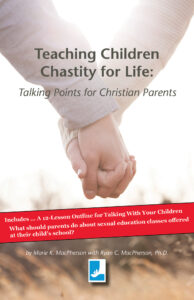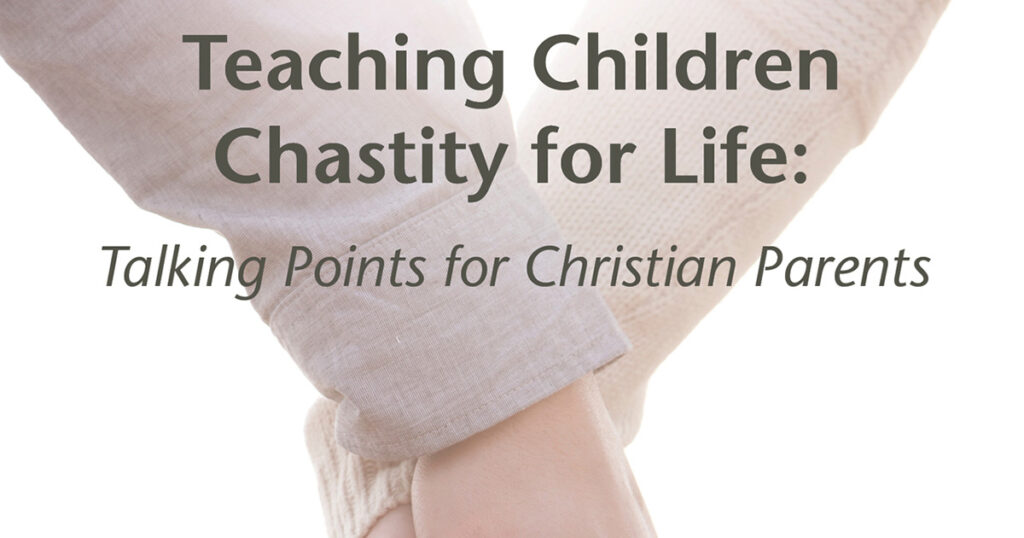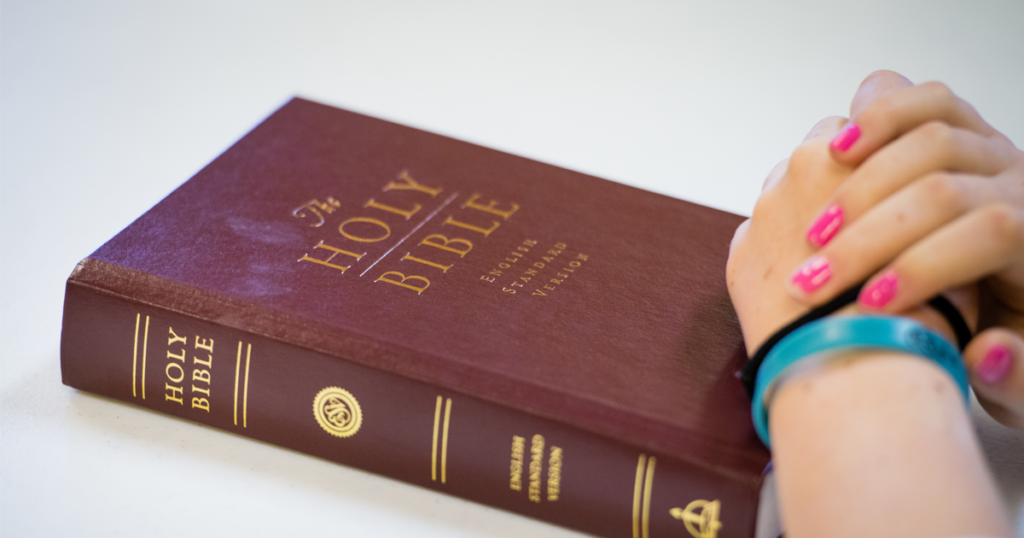In 2014, Linda Bartlett’s The Failure of Sex Education in the Church opened our eyes to the dangers of subjecting children to sex education programs developed from Alfred Kinsey’s perverted but widely accepted belief that children, even infants, benefit from early sexualization. Bartlett astutely teaches us what not to say to children in order to protect and preserve their chastity throughout childhood, and we are all the wiser for it. Upon turning the final page of her book, we are now poised to read the next volume, one that instructs us in what exactly to say to our children about sex without overstimulating their suggestible imaginations beyond chaste and decent living.

Teaching Chastity for Life: Talking Points for Christian Parents is that next volume.
Written by educator and mother Marie K. MacPherson along with her husband Ryan C. MacPherson, Ph.D., Teaching Chastity for Life frankly and kindly models how to think about human sexuality in light of God’s Word, then offers practical suggestions on how to discuss sexuality with children in the home at every developmental stage. From male and female body parts to clothing trends to transgenderism, the authors apply sensible, reasonable and respectful language to hot topics parents often fear broaching with their children.
The book itself is organized into chapters that address subjects as specific and as varied as human biology, sexual identity, chastity, marriage, procreation and even pornography and masturbation. It does not shy away from the hard questions nor gloss over verbs and nouns made awkward by the world’s present depravity, but instead directly and graciously speaks to what our children need to hear most: the truth from God’s Word about their created bodies and their relationships with each other.
The primary strength of this book is its faithfulness to Scripture, but a close second is its measured, classical approach to catechizing children. For example:
To promote chastity in childhood, we protect them; to promote it in youth, we direct them; and to promote it to married adults, we celebrate them and the fruits of their marriage. Conversation topics with young children include discipline and modesty. In middle school, we teach not just abstinence, which focuses on denial, but rather chastity, which is a vocation for them right now. For young adults, discussions shift toward appropriate actions with members of the opposite sex and conversations about how to find a suitable spouse without compromising God’s standards.
MacPherson, 22
Parents will find the integration of “Ideas for Teaching Moments” toward the end of each chapter particularly helpful. Here, the authors provide examples of developmentally appropriate conversations and activities to facilitate with children of various ages and stages, all with the intent of successfully communicating the chapter’s content to the child. For example, in the chapter titled “Biology,” they share a conversation appropriate for children ages 2–12:
Look through a photo album of baby pictures with your child. Talk about how you and your spouse love each other so much that you wanted to share your life together and your bodies, so you married one another. When you shared your bodies and held each other close, you each gave a part of yourselves, and God blessed it to begin growing a new life in the mother’s womb! Because a pregnancy can result from being intimate in this way, only husbands and wives should do it.
MacPherson, 18
“Gospel Reminders” appear at the end of each chapter, as well, applying the truth of Christ’s mercy to the daunting vocations of rearing children and honoring parents. The reader is continually assured of Christ’s sufficiency in all things, in all places, and in all times, as can be seen in this excerpt, also from the chapter “Biology”:
Because Jesus Christ is true Man as well as true God, He went through a wide variety of physical changes, just as you have. The very Individual Who was born, lived, died, and rose for you and your children has also experienced puberty. Remind your children that they can always talk to Jesus and pray about their concerns. He knows and He hears them.
MacPherson, 20
Teaching Chastity for Life is essentially a handbook “written by parents, for parents” (MacPherson, 2), pulling from Scripture’s authority as well as the authors’ personal experience and social research to provide realizable goals for parents in modeling chastity and talking about it with their children. Parents, no matter their personal strengths and weaknesses, can expect this book to equip, encourage and inspire them to train up their children more confidently in the way they should go.





Somewhere in the hustle and bustle of life, I’m never quite prepared for the BIG questions my kids throw at me late in the night. As they become teens and adults, it’s more challenging to direct them in their vocation rather than preach MY values. I found this book extremely helpful in arming me with the vocabulary to say what I wanted taught in a loving manner.
Thank you! Parents and children will be blessed.